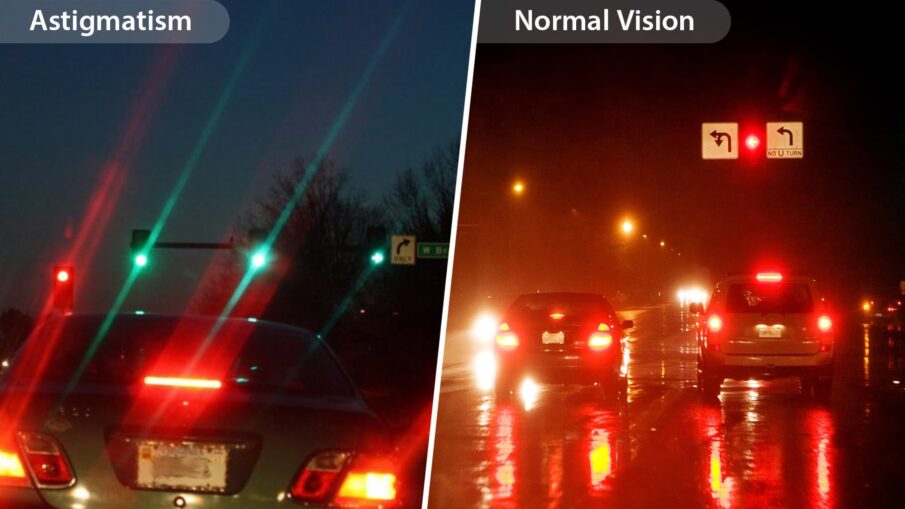Astigmatism is a common and generally treatable imperfection in the curvature of the eye that causes blurred distance and near vision. This occurs when either the front surface of the eye (cornea) or the lens inside the eye has mismatched curves. Instead of having one curve like a round-ball, the surface is egg-shaped. This causes blurred vision at all distances. Astigmatism is often present at birth and may occur in combination with nearsightedness or farsightedness. Basic signs and symptoms include, Blurred or distorted vision, Eyestrain or discomfort, Headaches, Difficulty with night vision and Squinting.
Causes of Astigmatism
Genetics: It’s not known what causes astigmatism, but genetics is a big factor. It’s often present at birth, but it may develop later in life. Most people are born with it, but experts don’t know why.
Surgery: Astigmatism may also occur as a result of an injury to the eye or after eye surgery. Astigmatism often occurs with nearsightedness or farsightedness.
Keratoconus: A rare condition called keratoconus causes astigmatism. This eye disease affects the cornea, causing the clear tissue on the cornea to thin and bulge out. This leads to cloudy or blurry vision, and sensitivity to bright lights. The cause of keratoconus is also unknown, but it’s believed to be hereditary, too.
Dim Lights: Keep in mind that while reading with low or dim lights can make it harder for eyes to focus, it doesn’t harm vision or cause astigmatism. However, if you already have an eye with astigmatism, and you read in low light, you might notice increased blurriness.
When to see a doctor: See an eye doctor if your eye symptoms detract from your enjoyment of activities or interfere with your ability to perform everyday tasks. An eye doctor can determine whether you have astigmatism and, if so, to what degree. He or she can then advise you of your options to correct your vision.



